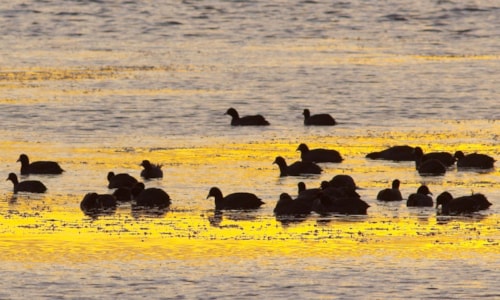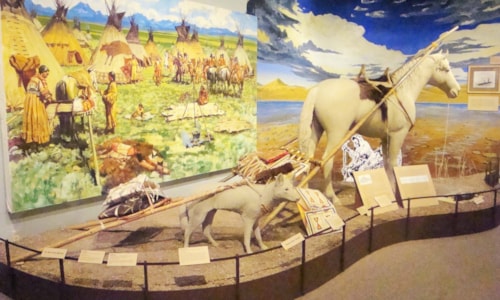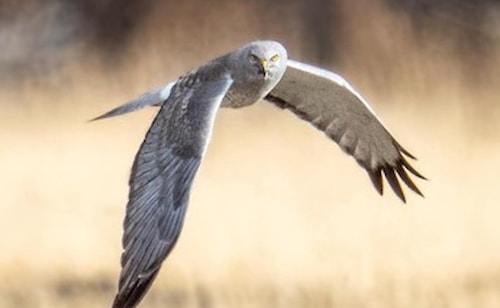Birding Trails

Come explore the wide variety of birds along Southwest Montana Gold West Country Birding Trails. Experience birding the continental divide where waters flow east to the Missouri River as well as west to the Columbia. Bird where Lewis & Clark and the Corps of Discovery viewed the splendor of Southwest Montana’s mountains and rivers.
On their journey west in April of 1805, Meriwether Lewis, William Clark, and the Corps of Discovery, entered what today is Montana and returned through the state again in 1806 on their journey homeward. While in Montana they recorded a number of bird discoveries in their field journals. As many as seventy different bird species were noted during their travels through the state. Many of the species found in Montana and described by Lewis and Clark were new to science. The Sage Grouse and Loggerhead Shrike for instance, were first noted in the vicinity of the Marias River, while Western Meadowlark and Long-billed Curlew were found near what today is Great Falls. New birds were noted right here in Southwest Montana as well. A Lewis’s Woodpecker was found on the Missouri River around the Gates of the Mountains, while Dusky Grouse and Pinyon Jay were discovered along the Jefferson River near what today is the town of Whitehall. Both the Clark’s Nutcracker, first noted along the Salmon River in Idaho, and the Lewis’s Woodpecker bear the names of the two discoverers.
Southwest Montana Birding Trails showcase one National Wildlife Refuge, two National Historic Sites, four Wildlife Management Areas, two State Parks, five campground / recreation areas, and numerous tracts of Bureau of Land Management and National Forest lands. Each area represents a unique combination of habitats, offering a wide variety of bird species. These lands provide important staging and nesting areas for habitat dependent rarities.
Follow the Lewis and Clark trail through our varied habitats from valley wetlands, short grass prairies, and through large tracts of sagebrush, up winding riparian streams to expansive coniferous forests and alpine meadows and to the vistas of our mountain peaks.
The valley wetland areas are an important production area for waterfowl as well as migrating, feeding and rest areas for a variety of species including Trumpeter Swan, Red- necked Grebe, Barrow’s Goldeneye, and Yellow-headed Blackbird. These wetlands also provide excellent habitat for breeding shorebirds such as Black-necked Stilt, American Avocet, and Wilson’s Phalarope.
Southwest Montana has a variety of grasslands including wet lowland sedge/grass, short grass prairie and tall grass mountain meadows. These areas attract Savannah Sparrow, Vesper Sparrow, Bobolink, Horned Lark, McCown’s Longspur, and Long-billed Curlew.
Large tracts of sage/rabbitbrush communities are inhabited by Gray Flycatcher, Sage Sparrow, Brewer’s Sparrow, Green-tailed Towhee, and Sage Thrasher.
The mountain streams and valley rivers provide excellent riparian vegetation that is home to a variety of songbirds including American Dipper, Dusky Flycatcher, Hammond’s Flycatcher, Willow Flycatcher, MacGillivray’s Warbler, Wilson’s Warbler, Lincoln Sparrow, White- crowned Sparrow, and Clay-colored Sparrow.
Mountains support coniferous forests, crystal clear lakes, and alpine meadows, which hosts species such as Great Gray Owl, Northern Pygmy-Owl, Pine Grosbeak, Gray Jay, Williamson’s Sapsucker, Gray-crowned Rosy-finch, American Pipit, Olive-sided Flycatcher, and Clark’s Nutcracker. Fire damaged areas contain numerous woodpecker species including Black-backed, American Three-toed, and Lewis’s Woodpeckers.
We hope you enjoy birding Southwest Montana’s Birding Trails. Along the way you will discover a vast diversity of birds that will delight birders of all experience levels. So come out and experience the birds of the grasslands, wetlands, and mountains of Southwest Montana.
Birding ethics: Please observe and enjoy birds from a distance. To avoid stressing birds or exposing them to danger, exercise restraint and caution during observation, photography, sound recording or filming. Keep well back from nest and nesting colonies, roost, display areas and important feeding sites. Stay on roads, trails and paths where they exist and respect private property. Keep habitat disturbance to a minimum. Practice common courtesy in contacts with other people. Your exemplary behavior will generate goodwill with birders and non-birders alike.
Credits: Several members of the Montana’s birding community, including Montana Audubon members Jack Kirkley, Gary Swant, Nate Kohler, Kristi DuBois, and John Carlson, contributed to the writing and editing of this content. We also want to thank Elaine Mann and other contributing members.



















